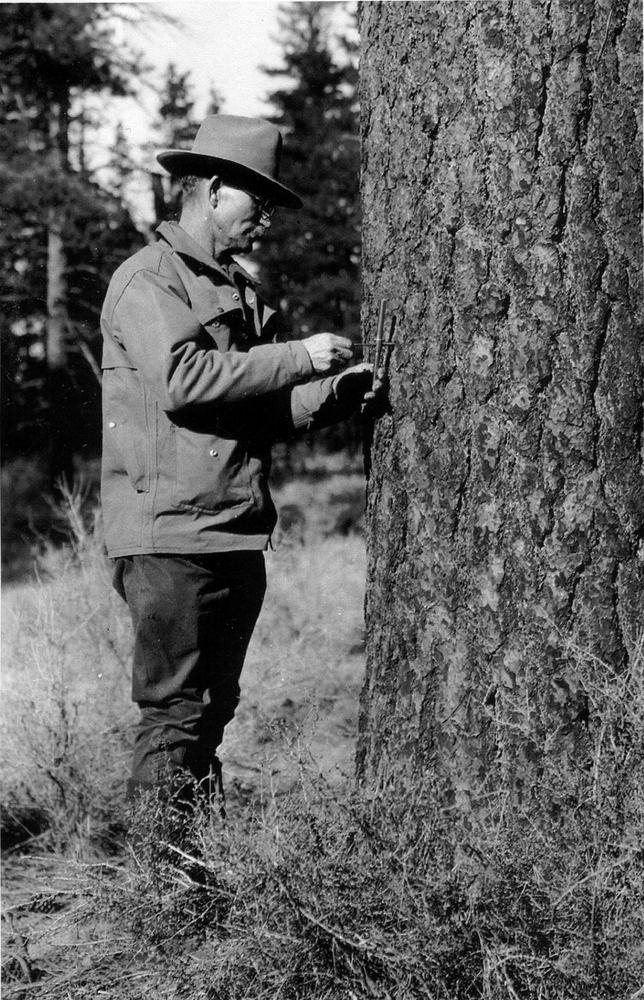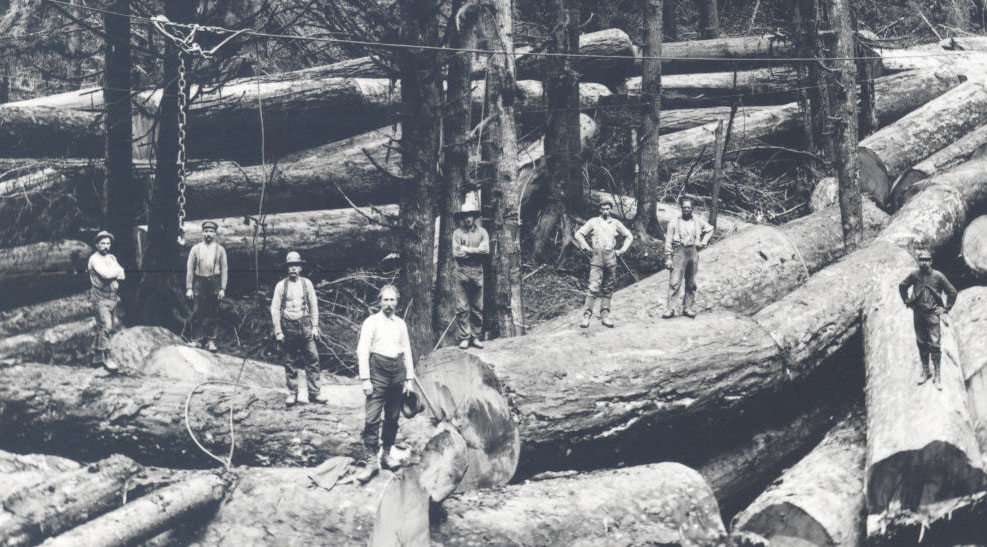Walter Julian Perry arrived in Bend, Oregon, on New Year's Day 1925. He had been transferred by the U.S. Forest Service from the Carson National Forest in New Mexico to the Deschutes National Forest for a specific reason: he was a forester possessed of a timber management ethic essential to sustaining the region's timber-based economy.
Years before, in October 1911, the arrival of the Oregon Trunk Railroad in Bend had connected central Oregon's vast timber reserves with markets. Two large Minnesota firms owned timber in the area. By 1916, the Brooks-Scanlon and Shevlin-Hixon companies were operating large pine sawmills in Bend. By the time Perry arrived, they had cut most of their timberlands and were starting to buy national forest timber. On the Carson National Forest, Perry had successfully managed a large ponderosa pine timber operation, and he was charged with managing timber sales and related land exchanges on the Deschutes National Forest.
Perry was born on January 29, 1873, near Fredonia, Kansas, and grew up in Texas and Kentucky. He left school at age eleven to work at many jobs—most notably construction in Missouri and mining and logging in Mexico. When he was thirty-seven, he found his "real life's work" in the Forest Service. He served on four national forests in New Mexico and Oregon from 1910 to 1936 as a forest ranger and timber manager. Essentially self-educated, he became a respected member of the forestry profession.
Perry served the Deschutes National Forest for seven and a half years. During those years, he won the confidence of the timber operators with whom he worked and established a pattern of sustainable forest management that benefited central Oregon's timber-based economy and created healthy second-growth ponderosa pine forests. He reprised this service on the Fremont National Forest before he retired in 1936.
Perry was one of a number of foresters who recognized that fire suppression, while it saved valuable timber in the short run, increased wildfire hazards in the long run. Policy caught up with that perception in the 1970s when fire control evolved into fire management.
Perry's penchant for science took root in central Oregon. In 1928, he helped establish a plantation of several genetic strains of ponderosa pine south of Bend to determine the best for area reforestation. Attracted to the technique of dendrochronology, which used tree rings to date natural phenomena, Perry applied the method to studies of climate and geology as well as forest management.
Perry led one of America's foremost archaeologists to his greatest discovery. Dr. Luther Cressman's 1938 find of some seventy pairs of sagebrush sandals in southern Oregon’s Fort Rock Cave more than doubled estimates of how long humans had lived in the Great Basin and Pacific Northwest. Cressman credited Perry in his 1988 memoir: "How much I and Far West prehistory owe to Walt!"
Perry died at age eighty-six in July 1959, only a few days after he and his wife Edith Rager observed their sixty-fifth wedding anniversary. He was survived by his wife and six of their eleven children. He is buried in Bend.
-
Perry, Walter.
Walter J. Perry using an increment borer to extract tree rings. Photo by Carl B. Neal, courtesy U.S. Forest Service
Related Entries
Map This on the Oregon History WayFinder
The Oregon History Wayfinder is an interactive map that identifies significant places, people, and events in Oregon history.
Further Reading
Joslin, Les. Ponderosa Promise: A History of U.S. Forest Service Research in Central Oregon. Portland: U.S. Department of Agriculture, Forest Service, Pacific Northwest Research Station, 2007.
Perry, Walter J. Walt Perry: An Early-Day Forest Ranger in New Mexico and Oregon. Edited by Les Joslin. Bend: Wilderness Associates, 1999.


